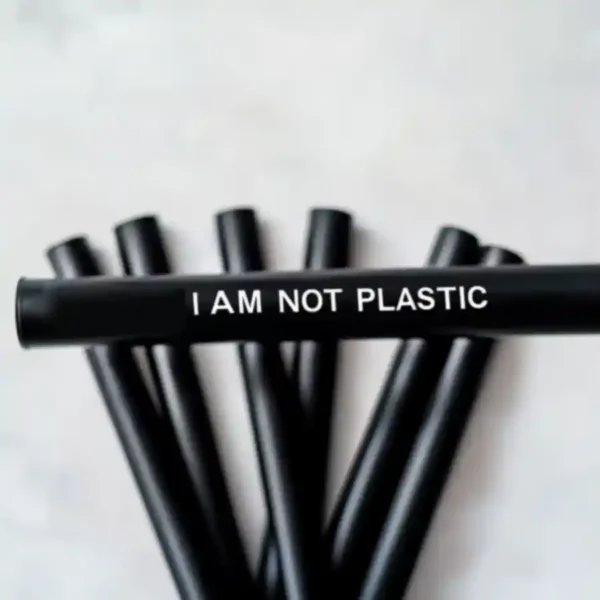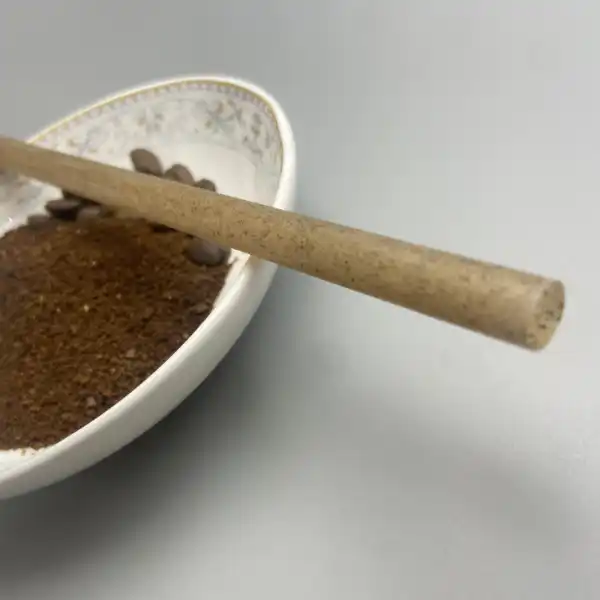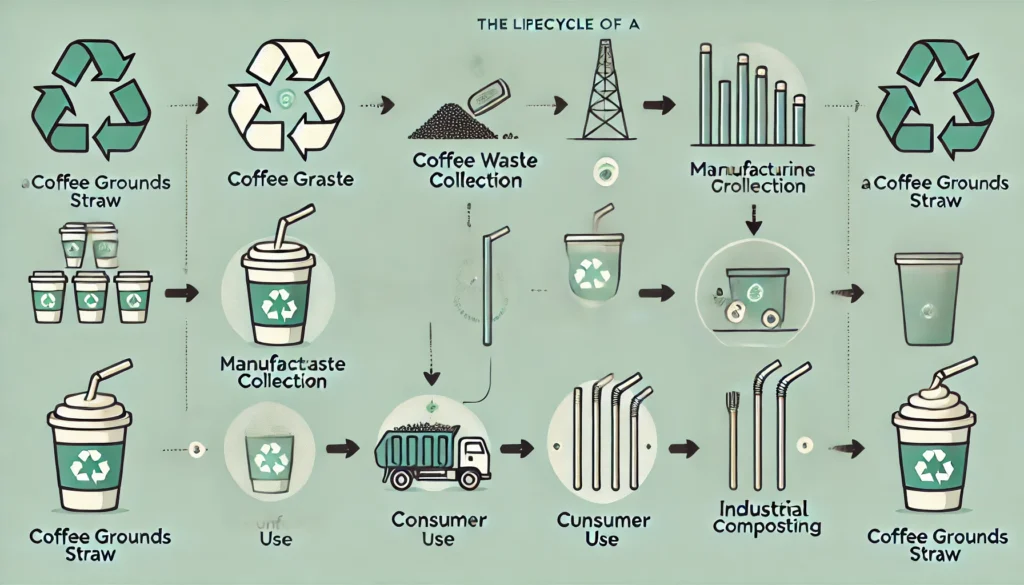
Introduction: Addressing the Plastic Straw Crisis
The global reliance on single-use plastic straws has reached alarming levels, with an estimated 500 million units discarded daily in the United States alone. Historically, straws evolved from natural reeds to petroleum-based plastics in the mid-20th century, cementing their role as a ubiquitous—yet environmentally destructive—consumer item. Coffee grounds straws emerge as a scientifically validated alternative, leveraging circular economy principles to transform agricultural waste into functional, biodegradable products. This article examines their composition, environmental efficacy, and practical applications for both consumers and enterprises.
1. Material Composition and Manufacturing Process
From Waste to Functional Product
Coffee grounds straws are synthesized through a proprietary blend of upcycled coffee waste (30–40%) and polylactic acid (PLA), a plant-based polymer derived from renewable resources like corn starch. The production process involves:
- Collection and Sterilization: Spent coffee grounds are sourced from commercial vendors, sterilized, and dehydrated.
- Extrusion: Grounds are combined with PLA and extruded into straw molds under controlled temperatures.
- Quality Assurance: Straws undergo rigidity and biodegradability testing to meet international standards.
Certifications and Safety Compliance
- TÜV OK Compost Industrial: Validates full biodegradability within 180 days in industrial facilities.
- FDA Compliance: Ensures food-safe status, free from BPA and phthalates.
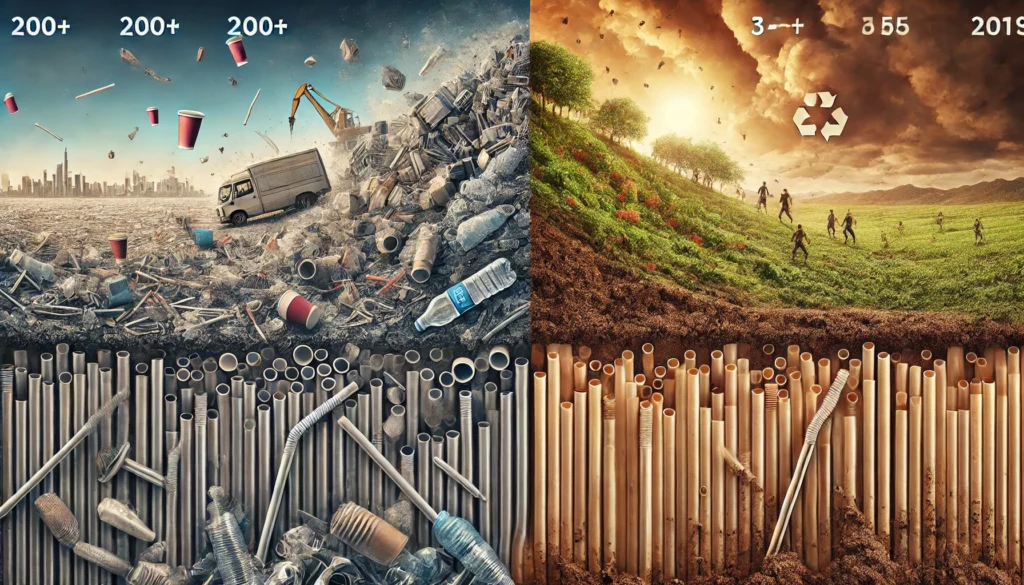
2. Environmental Impact Analysis
Carbon Footprint Reduction
A 2022 lifecycle assessment revealed coffee grounds straws generate 60% fewer CO2 emissions compared to plastic straws, owing to waste repurposing and energy-efficient manufacturing.
Waste Diversion Potential
Approximately 10 million metric tons of coffee waste are generated globally each year. Repurposing 1 ton of this waste into straws offsets 2.5 tons of CO2-equivalent emissions, according to the Environmental Protection Agency (EPA).
3. Comparative Performance Against Alternatives
| Material | Durability (Hours in Liquid) | Tempo de decomposição | Carbon Footprint (kg CO2/kg) |
|---|---|---|---|
| Plastic | Indefinite | 200+ years | 3.5 |
| Papel | 0.5–1 | 2–6 weeks | 2.1 |
| Coffee Grounds | 4–6 | 3-6 meses | 1.4 |
Key Advantages
- Structural Integrity: Resists sogginess 4x longer than paper straws.
- Thermal Stability: Suitable for beverages up to 80°C (176°F).
4. Implementation Strategies
For Consumers
- Optimal Usage: Avoid prolonged exposure to temperatures exceeding 80°C.
- End-of-Life Management:
- Home Composting: Shred straws and integrate into compost piles; full decomposition may take 12+ months.
- Industrial Composting: Utilize municipal facilities for faster breakdown (90–180 days).
For Businesses
- Bulk Procurement: Partner with suppliers like The Sugar Cane Straw Company for volume discounts (20–30% cost reduction at 10,000+ units).
- Customer Education: Display signage explaining the straws’ origin and compostability.
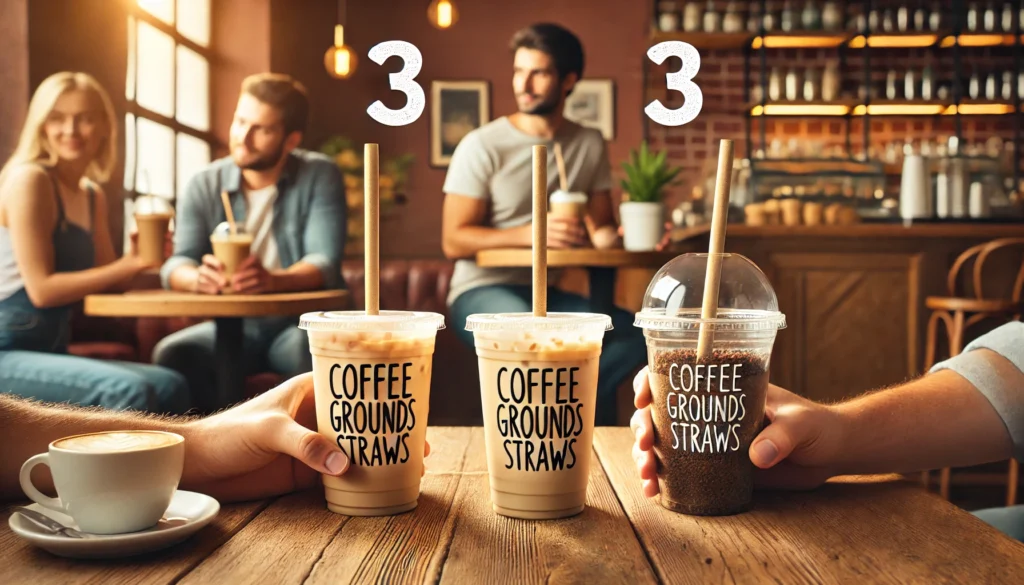
5. Frequently Asked Questions (FAQ)
1. Are coffee grounds straws truly compostable?
Yes, under industrial composting conditions (TÜV OK Compost certification). Home composting is feasible but less efficient.
2. Do they impart a coffee flavor to beverages?
No. Residual oils are removed during sterilization, ensuring neutral taste.
3. How do costs compare to plastic straws?
Approximately 15–20% higher per unit, though bulk pricing narrows this gap.
4. Are there allergen risks?
The sterilization process eliminates proteins linked to coffee allergies (FDA, 2021).
5. Can businesses customize straws?
Yes. Branding options include embossed logos and color variations (PLA dyes).
6. What disposal methods are recommended?
Prioritize industrial composting. Landfill disposal negates biodegradability benefits.
7. Do they comply with EU plastic bans?
Yes. Compliant with Directive (EU) 2019/904 on single-use plastics.
8. Where can I purchase them?
Direct from eco-suppliers like The Sugar Cane Straw Company or wholesale platforms like EcoEnclose.
6. Future Innovations and Policy Implications
Technological Advancements
- Hybrid Materials: Research into blending coffee grounds with rice husks for enhanced tensile strength.
- Smart Tracking: Integration of QR codes to educate users on local composting options.
Regulatory Trends
The European Union’s Circular Economy Action Plan (2023) incentivizes businesses adopting upcycled materials through tax rebates.

Conclusion: Leading the Shift to Sustainable Consumption
Coffee grounds straws exemplify the intersection of innovation and environmental stewardship. By adopting these straws, individuals and businesses collectively mitigate plastic pollution while advancing circular economy objectives. As regulatory frameworks evolve, proactive adoption positions enterprises as sustainability leaders.
Citations
- TÜV Austria. (2023). OK Compost Industrial Certification Criteria. https://www.tuv-at.be/compost
- U.S. Environmental Protection Agency (EPA). (2022). Advancing Sustainable Materials Management. https://www.epa.gov/plastics
- European Commission. (2023). Single-Use Plastics Directive. https://ec.europa.eu/environment/plastics
- Starbucks Corporation. (2021). Grounds for Your Garden Initiative. https://www.starbucks.com/sustainability
- U.S. Food and Drug Administration (FDA). (2021). Food Contact Substance Regulations. https://www.fda.gov/food
- Green Business Journal. (2023). Case Study: Berlin Café Waste Reduction.
- BPI. (2022). Certified Compostable Products Directory. https://www.bpiworld.org
- Marine Pollution Bulletin. (2022). Impact of Plastic Straws on Marine Ecosystems.





